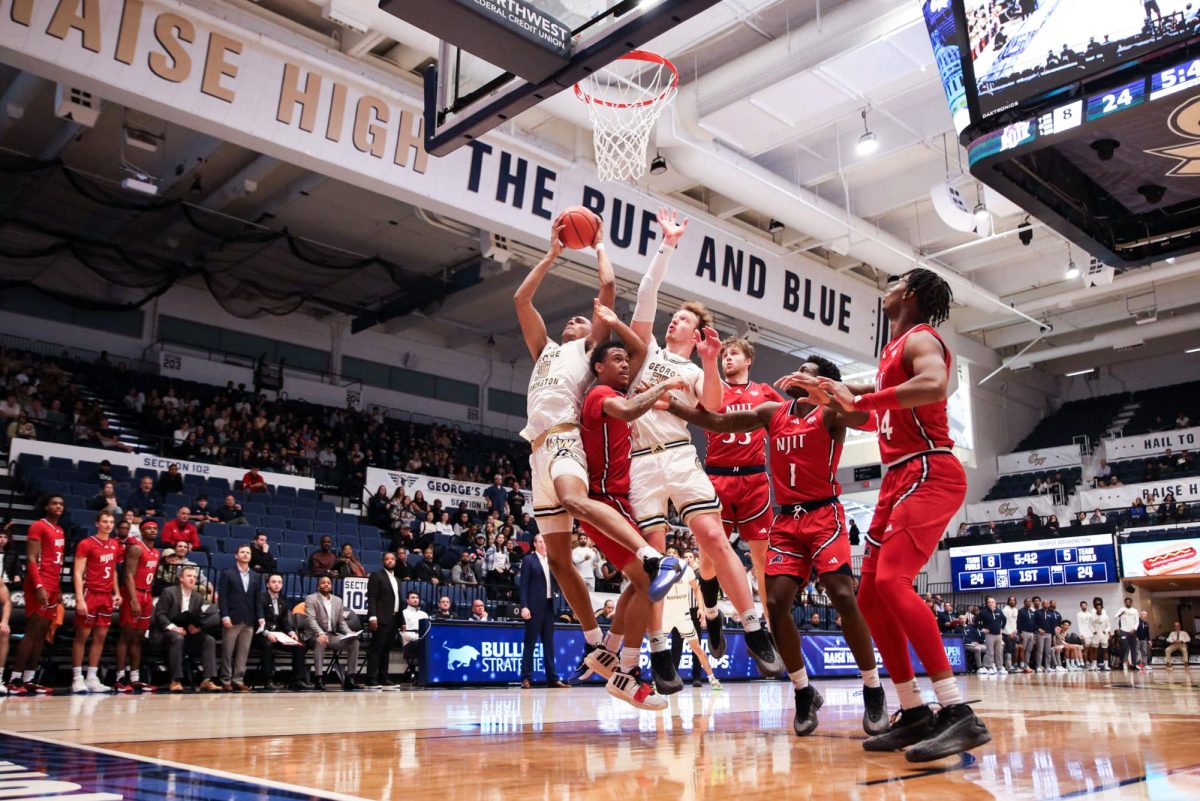Jack Kvancz would like to tell you about his friend.
His first name was Arnold, but you probably know him as Red Auerbach, member of the Basketball Hall of Fame and arguably the greatest coach in NBA history. Auerbach, who passed away in 2006, won 16 NBA championships – nine as head coach of the Boston Celtics and an additional seven in the team’s front office – and made such an impact that the league’s coach of the year trophy bears his name.
And the red seat in the middle of Smith Center’s lower level? That was his.
With the arena’s renovations precipitating a swap in sides between the students and season-ticket holders, Auerbach’s former seat will now find itself amid a swarm of young Colonials supporters who may be unaware of its significance, and fail to treat it accordingly. The potential for irreverence has not been lost on GW’s athletic department, which is looking to increase the student body’s awareness of Auerbach and his ties to his alma mater.
“Once the students know what the deal is, I don’t think there will be a problem at all,” said Kvancz, GW’s director of Athletics. “They just have to know who he is.”
Auerbach enrolled at GW in 1937 to play for Bill Reinhart – GW’s all-time winningest men’s basketball coach – and graduated in 1940, meeting his wife along the way. A decade later, after coaching stints that included D.C.’s St. Albans School and Roosevelt High School, he was at the helm of the Celtics, building a dynasty on the backs of legends like Bob Cousy and Bill Russell as coach, and later drafting Larry Bird and Kevin McHale as general manager.
It was the mutual connection to Cousy that originally brought Kvancz and Auerbach together, as Kvancz played under Cousy’s coaching direction at Boston College. A second connection – GW – was established when Kvancz came to Foggy Bottom 14 years ago.
Now, Kvancz tells tales of his late friend that interweave as seamlessly as the nylon strands of a basketball net. He praises Auerbach’s accomplishments not only as a basketball coach, but also as a person. In his first year as Boston’s head coach, Auerbach coached Chuck Cooper, the first black player to be drafted by an NBA team, in Cooper’s first season in the NBA. When he retired as coach to become a team executive, he tabbed Russell to succeed him as player-coach and become the league’s first black head coach.
“He didn’t look at you and care if you were black, white, purple or yellow,” Kvancz said. “He looked at you because you could play, because you were a good guy.”
Kvancz fondly recalls the regular lunches Auerbach would organize – always on Tuesday, always at 11 a.m. – with a group of 10 to 15 attendees, its membership closely guarded and its guest policy regulated by the legendary coach. Auerbach picked up the tab every time, taking offense should anyone else try to do so.
“If you ever volunteered to pick up the check, I guarantee that’s the last time you were coming to lunch,” Kvancz said with a laugh.
At GW games, Auerbach would sit in one of his four season tickets, never missing a game during Kvancz’s tenure. Kvancz said Auerbach gave suggestions to Colonials players and coaches, tapping into his wealth of basketball knowledge and professional connections to advise on everything from ways to improve on the court to whether to enter the NBA before graduation.
The red seat commemorating Auerbach’s support of the team for which he once played was installed shortly before his death in 2006, with GW’s men’s and women’s basketball teams each bearing red bands on their uniforms for the 2006-2007 season. At Friday’s Colonials Invasion, his memory will be honored with a tribute from the Colonial Army.
“He was a loyal GW guy. He did everything he possibly could to help GW’s basketball program,” Kvancz said. “I wish we had 100 more of those guys.”






